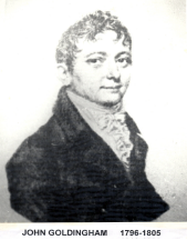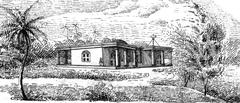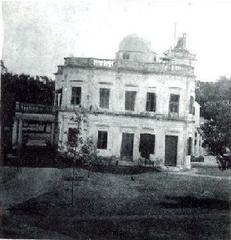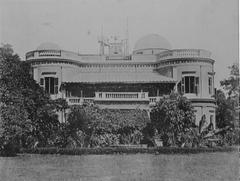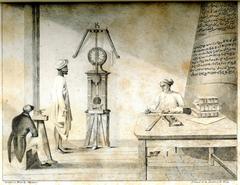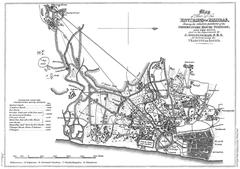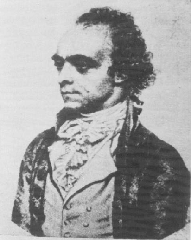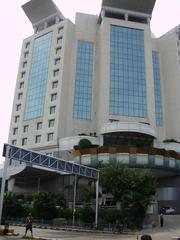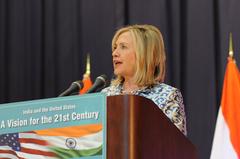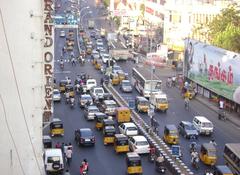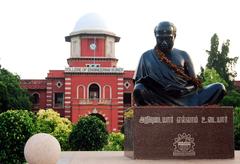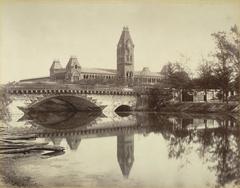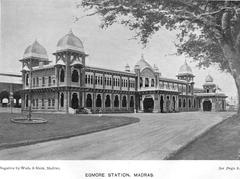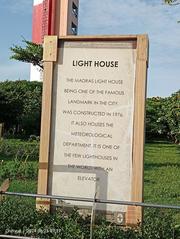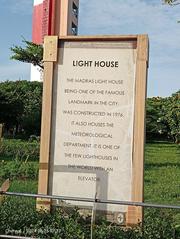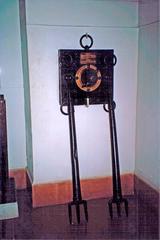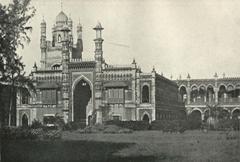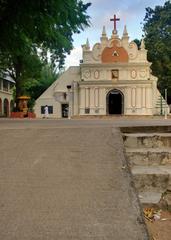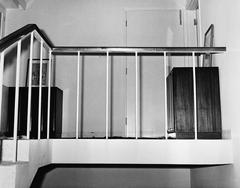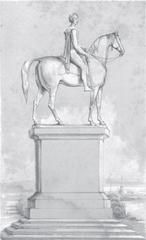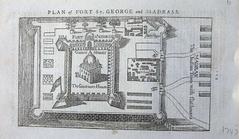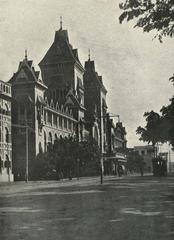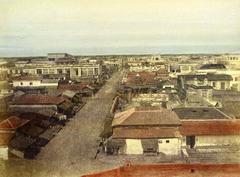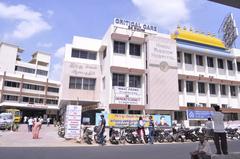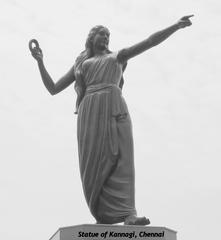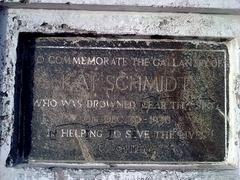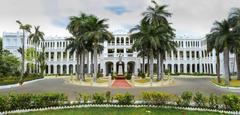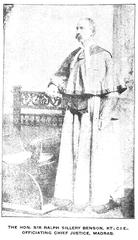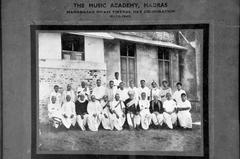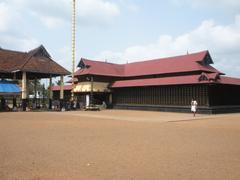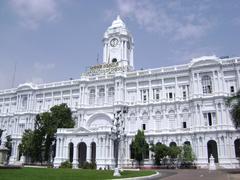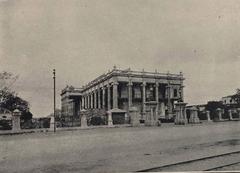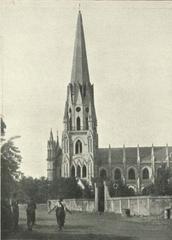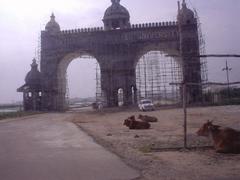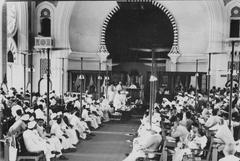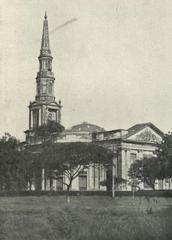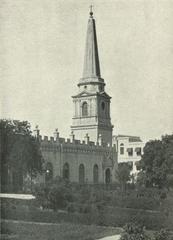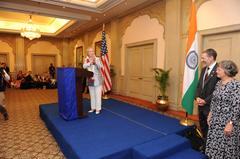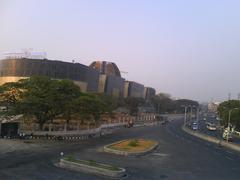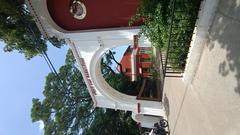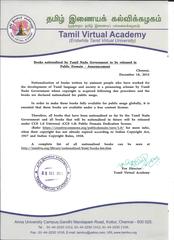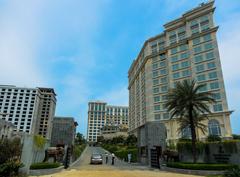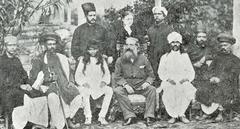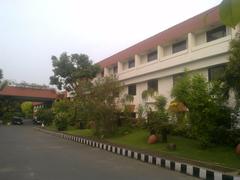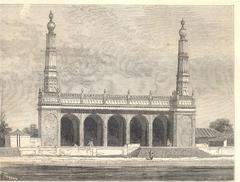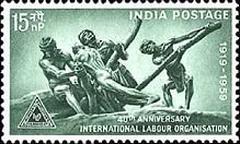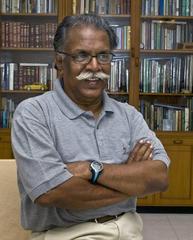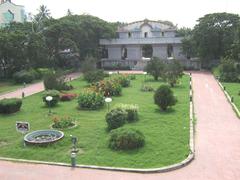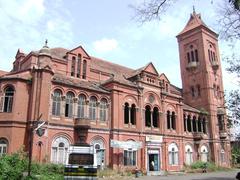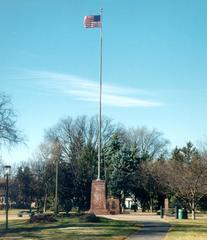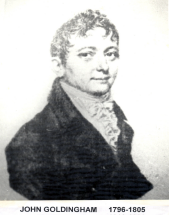
Madras Observatory Visiting Hours, Tickets, and Chennai Historical Sites Guide
Date: 14/06/2025
Introduction
The Madras Observatory, established in 1792 in what is now Chennai, India, is a landmark of scientific achievement and colonial history. As one of South Asia’s earliest modern astronomical institutions, the observatory was pivotal in advancing astronomy, timekeeping, geodesy, and meteorology—contributing significantly to global scientific understanding and the Great Trigonometrical Survey of India. From its beginnings as a private effort by William Petrie to its formalization by the British East India Company, the observatory’s legacy is marked by groundbreaking research, cross-cultural collaboration, and the enduring granite transit pillar that stands as a testament to its scientific impact (Indian Institute of Astrophysics; The Atlantic).
Today, the site—within the Regional Meteorological Centre in Nungambakkam—is mostly in ruins, but it continues to attract history buffs and science enthusiasts. This guide offers detailed information on the observatory’s history, visitor guidelines, accessibility, nearby attractions, and practical travel tips to help you make the most of your Chennai heritage experience (Astronomical Heritage; The Hindu; The Better India).
1. History and Legacy of the Madras Observatory
Early Foundations (1786–1792)
The observatory’s origins trace back to 1786, when William Petrie established a private observatory in Madras to support navigation and mapping in colonial India. The British East India Company soon recognized its importance and, under Sir Charles Oakeley and architect Michael Topping, formalized the Madras Observatory in 1792 (Indian Institute of Astrophysics). The site’s location at latitude 13°04’05’’ N and longitude 80°14’48’’ E was chosen for optimal astronomical observations.
Instrumentation and Scientific Achievements
Equipped with advanced instruments—including transit telescopes, azimuth circles, and precision clocks—the observatory enabled detailed star cataloging, lunar and planetary observations, and provided time signals crucial for navigation and the railway network. Its most iconic feature, the 15-foot granite pillar, commemorates the “planting of mathematical sciences in Asia” and displays inscriptions in Latin, Tamil, Telugu, and Hindustani (Rohini Devasher).
Role in the Great Trigonometrical Survey
The observatory’s longitude was the fundamental reference for the Great Trigonometrical Survey (GTS) of India, making it central to the accurate mapping of the subcontinent (Indian Institute of Astrophysics). Its timekeeping data was essential for survey triangulation and the synchronization of time across the region.
Eminent Figures
Notable astronomers associated with the Madras Observatory include:
- John Goldingham: First official astronomer, pioneer in timekeeping and longitude measurement.
- Thomas Glanville Taylor: Compiler of the celebrated ‘Madras Catalogue’ of over 11,000 stars.
- Norman Robert Pogson: Government Astronomer, discoverer of minor planets and variable stars, and creator of the Variable Star Atlas.
- Chinthamani Ragoonatha Chary: Prominent Indian astronomer and significant contributor to the observatory’s research (Astronomical Heritage).
Transition and Current State
By the late 19th century, research shifted to the Kodaikanal Observatory, and the Madras site became primarily focused on meteorology. Today, the original structures are largely gone, with the granite pillar and some stone slabs remaining within the Regional Meteorological Centre (Rohini Devasher).
2. Visiting the Madras Observatory: Practical Information
Location and Access
- Address: Regional Meteorological Centre, College Road, Nungambakkam, Chennai, Tamil Nadu, India (Astronomical Heritage).
- Getting There:
- By Metro: Government Estate station (Blue Line) is the nearest Chennai Metro stop.
- By Suburban Rail: Nungambakkam station is close by.
- By Bus: Buses to Fort St. George or the Government Museum stop nearby.
- By Taxi/Auto: Taxis and auto-rickshaws are readily available throughout Chennai.
Visiting Hours and Entry
- Official Hours: Monday to Friday, 9:00 AM – 5:00 PM (IMD working hours).
- Closed: Saturdays, Sundays, and public holidays.
- Entry Requirements: The observatory is within a functioning government facility—prior permission is required from the Regional Meteorological Centre. Contact in advance to arrange a visit; heritage groups like Madras Inherited occasionally organize guided walks.
Tickets and Fees
- From Outside: Free to view the ruins from outside the fence.
- Inside Access: Free, but requires prior permission. Some heritage walks may charge a nominal fee.
Accessibility
- The site is not wheelchair accessible due to uneven ground and lack of visitor infrastructure.
- Visitors should wear comfortable shoes and be prepared for outdoor conditions.
Photography and Visitor Guidelines
- Photography is allowed from outside; inside the compound requires staff permission.
- Respect all boundaries and security protocols. Carry valid identification.
3. What to Expect During Your Visit
- Site Condition: The main remnants are the granite pillar and a few stone slabs. There is minimal signage or visitor infrastructure (Aeon).
- Duration: 15–30 minutes is sufficient for most visits.
- Guided Tours: Not routinely available; heritage organizations or academic groups may provide expert-led walks by prior arrangement.
4. Practical Tips for Visitors
- Best Season: Visit during winter (December–February) for pleasant weather (MakeMyTrip).
- Dress Code: Light, modest clothing and sun protection recommended.
- Safety: Carry water, respect site boundaries, and do not disturb the ruins.
- Language: English and Tamil are commonly spoken; signage is minimal.
5. Nearby Attractions
- Government Museum, Egmore: Archaeological and scientific collections.
- Fort St. George: British-era fort and museum.
- St. George’s Cathedral: Colonial architectural landmark.
- Express Avenue Mall & Spencer Plaza: Shopping and dining options.
- Birla Planetarium: Interactive astronomy exhibits (Birla Planetarium).
- Wesley Church, Egmore: A 27-minute walk from the observatory (Trek Zone).
6. Frequently Asked Questions (FAQ)
Q: What are the Madras Observatory visiting hours?
A: Monday–Friday, 9:00 AM–5:00 PM, but only with prior permission. No official public hours; site can be viewed from outside during daylight.
Q: Is there an entry fee?
A: No; viewing from outside is free. No ticketing system.
Q: Can I take photographs?
A: Yes, from outside the fence. Inside photography requires permission.
Q: Is the site wheelchair accessible?
A: No, due to uneven terrain and lack of pathways.
Q: Are guided tours available?
A: Not regularly. Heritage walks are occasionally organized; academic visits may be arranged by contacting relevant institutions.
7. Preservation, Legacy, and Further Exploration
The Madras Observatory’s legacy is foundational to India’s scientific history, influencing institutions like the Indian Institute of Astrophysics and inspiring Chennai’s ongoing role as a hub of science and technology (Indian Institute of Astrophysics). While the physical remains are modest, the observatory’s scientific and cultural contributions endure. Heritage groups and local advocates continue to press for greater preservation and public awareness (The Hindu).
8. Visuals and Resources
Include high-quality images of the granite pillar, site ruins, and archival materials. Use descriptive alt text, such as “Madras Observatory granite pillar Chennai”, to enhance SEO and accessibility.
9. Plan Your Visit and Learn More
To explore Chennai’s scientific and colonial heritage:
- Combine your Madras Observatory visit with trips to the Government Museum, Fort St. George, and Birla Planetarium.
- For academic or group visits, contact the Regional Meteorological Centre or the Indian Institute of Astrophysics.
- Explore related articles on Chennai’s colonial architecture and travel tips on our website.
Stay updated on heritage events and guided walks through the Audiala app, and follow us on social media for the latest information.
Summary
The Madras Observatory is a profound emblem of Chennai’s—and India’s—scientific heritage. Its enduring granite transit pillar and scattered ruins evoke a time when the site was central to the advancement of astronomy, geodesy, and meteorology. While access is limited, its story continues to inspire, offering visitors a rare connection to the city’s colonial and scientific past. For the best experience, plan ahead, respect the operational nature of the site, and complement your visit with nearby historical attractions. For updates and curated heritage tours, engage with local heritage groups or download the Audiala app (Rohini Devasher; The Better India; The Atlantic).
References
- Indian Institute of Astrophysics. (n.d.). History of IIAP. (https://www.iiap.res.in/about-us/history/)
- Astronomical Heritage. (n.d.). Madras Observatory. (https://web.astronomicalheritage.net/show-entity?identity=124&idsubentity=1)
- Rohini Devasher. (n.d.). Old Madras Observatory Field Notes. (https://www.rohinidevasher.com/old-madras-observatory-field-notes-1/)
- The Atlantic. (2017). Madras Observatory and Colonialism. (https://www.theatlantic.com/science/archive/2017/10/madras-observatory-colonialism/542883/)
- The Hindu. (2013). The Origins of the Weatherman in Madras. (https://www.thehindu.com/news/cities/chennai/the-origins-of-the-weatherman-in-madras/article5045891.ece)
- The Better India. (n.d.). Madras Observatory: Modern Astronomy in India. (https://thebetterindia.com/118431/madras-observatory-modern-astronomy-jantar-mantar-india/)
